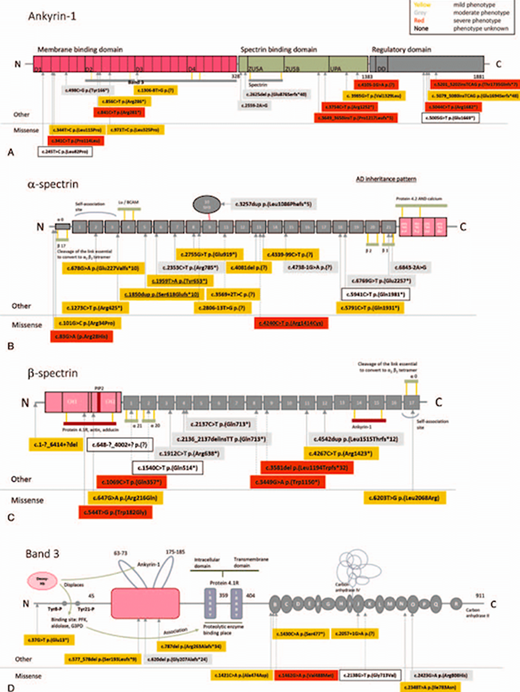Introduction: Hereditary Spherocytosis (HS) is the most common red cell membrane disorder. 25-30% of cases involve the SPTB gene which encodes for β-Spectrin, a protein that maintains red blood cell shape. Heterozygous variants in SPTB are associated with autosomal dominant HS and elliptocytosis. While genetic testing is not routinely done to confirm HS, it is useful in atypical presentations.
Case Description: A 1 week old male presented to the pediatric hematology/oncology clinic for anemia. He was born late preterm and had a history of hyperbilirubinemia requiring phototherapy, failure to thrive, and developmental delay. On examination, he was noted to have hypotonia. There was no known family history of hematologic problems. Based on this constellation of signs and symptoms, he had a comprehensive hematologic and genetic workup. On lab evaluation, his peripheral blood smear showed normocytic normochromic red blood cells with some spherocytes, significant polychromasia, normal WBC and normal platelet morphology. His newborn screen was normal, direct coombs' negative, osmotic fragility test was positive, and protein band 3 reduction was abnormal. His abdominal ultrasound was normal. Whole exome sequencing with variant segregation analysis was significant for heterozygosity of the p.Q1034X variant of the SPTB gene. This variant in the SPTB gene has not been previously reported.
Discussion: We found a novel, de novo variant in an infant with HS through whole exome sequencing. This variant is predicted to cause loss of normal protein function either through protein truncation or non-mediated mRNA decay resulting in fragile red blood cells. While neither parent was found to carry this mutation, germline mosaicism should not be excluded. Physicians should be aware that prenatal diagnosis is available to address the risk of recurrence in future pregnancies.
References:
1. Ankyrin-1 mutations are a major cause of dominant and recessive hereditary spherocytosis Stefan Eber-Jennifer Gonzalez-Marcia Lux-Alphonse Scarpa-William Tse-Marion Dornwell-Jutta Herbers-Wilfried Kugler-Refik Ozcan-Arnulf Pekrun-Patrick Gallagher-Werner Schroter-Bernard Forget-Samuel Lux - Nature Genetics - 1996
2. Characterization of the underlying molecular defect in hereditary spherocytosis associated with spectrin deficiency. H Hassoun-JN Vassiliadis-J Murray-PR Njolstad-JJ Rogus-SK Ballas-F Schaffer-P Jarolim-V Brabec-J Palek - Blood - 1997
3. The Complexity of Genotype-Phenotype Correlations in Hereditary Spherocytosis: A Cohort of 95 Patients Vuren-Annelies & Zwaag-Bert & Huisjes-Rick & Lak-Nathalie & Bierings-M.B. & Gerritsen-Egbert & van Beers-Eduard & Bartels-Marije & Van Wijk-Richard - HemaSphere - 2019
4. Hereditary spherocytosis with spectrin deficiency due to an unstable truncated beta spectrin. H Hassoun-JN Vassiliadis-J Murray-SJ Yi-M Hanspal-CA Johnson CA-J Palek - Blood - 1996
5. LL Peters- Semin Hematol-2018
6. Red cell membrane: past, present, and future Narla Mohandas-Patrick Gallagher - Blood - 2008
7. Spectrum of Ankyrin Mutations in Hereditary Spherocytosis: A Case Report and Review of the Literature Yeping Luo-Zhuoying Li-Lihua Huang-Jing Tian-Menglong Xiong-Zuocheng Yang - Acta Haematologica - 2018
Figure: A map of all the pathogenic mutations found on the protein structures of ankyrin-1, a-spectrin, b-spectrin and band 3.
No relevant conflicts of interest to declare.
Author notes
Asterisk with author names denotes non-ASH members.


This feature is available to Subscribers Only
Sign In or Create an Account Close Modal